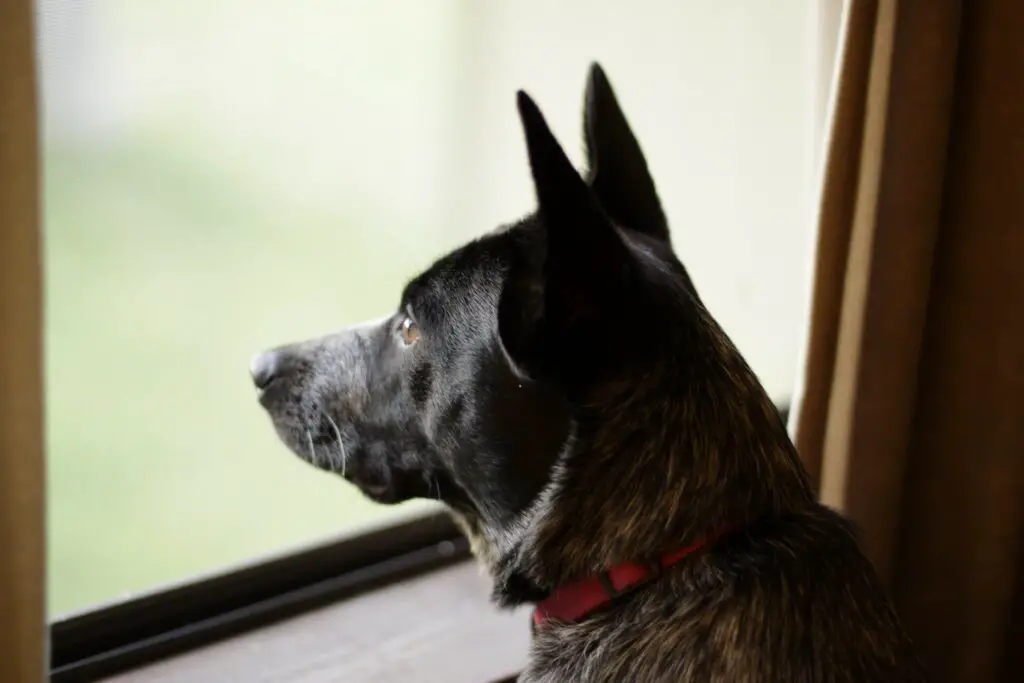Rabies is a serious and often fatal disease that affects both humans and animals, including dogs. Once infected, dogs typically do not recover from rabies, and there is no known cure for the disease.
While the virus can be prevented through vaccination, it’s important to exercise caution around stray or unfamiliar dogs, as they may be infected and could potentially transmit the virus through bites or scratches.
Can Dogs Recover From Rabies?

Unfortunately, dogs cannot recover from rabies once they have been infected. Rabies is a viral disease that affects the nervous system and is almost always fatal in dogs.
Once symptoms appear, there is no effective treatment for the disease, and infected dogs usually die within 7 days of becoming sick.
The best way to prevent rabies in dogs is through regular vaccinations.
If you suspect that a dog may have been exposed to rabies, it’s important to avoid contact with the animal and notify your local animal control agency or public health department right away.
By taking these precautions, we can help prevent the spread of this deadly disease and protect both humans and animals alike.
What is The Survival Rate of Rabies in Dogs?

The survival rate of rabies in dogs is extremely low, with infected dogs almost always succumbing to the disease. Once clinical symptoms appear, rabies is virtually 100% fatal in dogs.
It’s important to note that dogs can carry the virus without showing any visible symptoms, which is why vaccination is crucial in preventing the spread of the disease.
While there have been rare cases of dogs surviving rabies, these instances are very few and far between, and there is currently no known cure for the disease.
If you suspect that a dog may have been exposed to rabies, it’s important to seek veterinary care right away and take steps to prevent further transmission of the virus to other animals and humans.
Why Can’t Dogs Be Cured of Rabies?
Dogs cannot be cured of rabies because the virus attacks the nervous system and causes severe damage to the brain and spinal cord.
Once the virus enters a dog’s body, it begins to replicate rapidly and spread throughout the nervous system.
The virus then travels to the salivary glands, where it can be transmitted to other animals or humans through bites or scratches.
The reason why rabies is so difficult to cure is that the virus has developed a number of strategies to evade the immune system and hide from antiviral drugs.
For example, the virus can use the blood-brain barrier to protect itself once it has entered the brain, making it difficult for drugs to reach and destroy the virus.
Another reason why dogs can’t be cured of rabies is that there are currently no effective treatments for the disease.
While vaccines can prevent the virus, once a dog is infected, there is no known cure for the disease.
This is why it’s crucial to keep dogs up-to-date on their vaccinations and take steps to prevent exposure to potentially infected animals.
How Long Does Rabies Take To Show?
Rabies can take anywhere from a few days to several months to show symptoms in dogs.
The incubation period for rabies is typically 2-3 months, but it can vary from as little as 1 week to as long as 1 year, depending on factors such as the location of virus entry and the viral load.
However, in some rare cases, symptoms can appear within a few days after exposure to the virus.
Once the virus enters the dog’s body, it begins to replicate rapidly and spread throughout the nervous system.
As the virus continues to replicate, symptoms of the disease start to appear. At first, there may be mild signs such as fever, loss of appetite, and behavioral changes.
As the disease progresses, more severe symptoms such as seizures, paralysis, and aggression may occur.
Can Dogs Survive Rabies After Symptoms?
No. Dogs cannot survive rabies after symptoms appear. Once a dog has been infected with the virus, it can take anywhere from a few days to several months for symptoms to appear.
Once clinical signs of rabies appear, the disease is nearly always fatal, and treatment is typically supportive.
There have been rare cases of human survival from clinical rabies, but only a few survivors had no history of pre- or post-exposure prophylaxis.
In dogs, there are isolated and poorly documented reports of some surviving rabies, which may be attributed to the rabid animal having an attenuated strain of the virus.
However, these instances are extremely rare, and the overwhelming majority of infected dogs will die from the disease.
The best way to protect dogs from rabies is through regular vaccinations and avoiding contact with potentially infected animals.
Is a Dog Alive After 10 Days of Rabies?
Most dogs aren’t alive after 10 days of rabies. However, if a dog or cat is alive and healthy ten days after exposure to a potentially rabid animal, the owner can be reassured that the animal is not infected with rabies.
If post-exposure rabies prophylaxis had been started for the bite victim, treatment can be terminated after ten days. This recommendation is based largely on experimental studies by Vaughn et al.
However, if a dog or cat is alive and healthy ten days after exposure to a potentially rabid animal, the owner can be reassured that the animal is not infected with rabies.
If post-exposure rabies prophylaxis had been started for the bite victim, treatment can be terminated after ten days. This recommendation is based largely on experimental studies by Vaughn et al.
In Conclusion
In conclusion, it’s highly unlikely for dogs to recover from rabies once infected, and there is currently no known cure for the disease.
While vaccinations can prevent the virus, it’s crucial to exercise caution around dogs with unknown vaccination status or those that may have been exposed to the virus.
If you suspect that a dog may be infected with rabies, it’s important to avoid contact with the animal and notify your local animal control agency or public health department right away.
By taking these precautions, we can help prevent the spread of this deadly disease and protect both humans and animals alike.





Leave a Reply